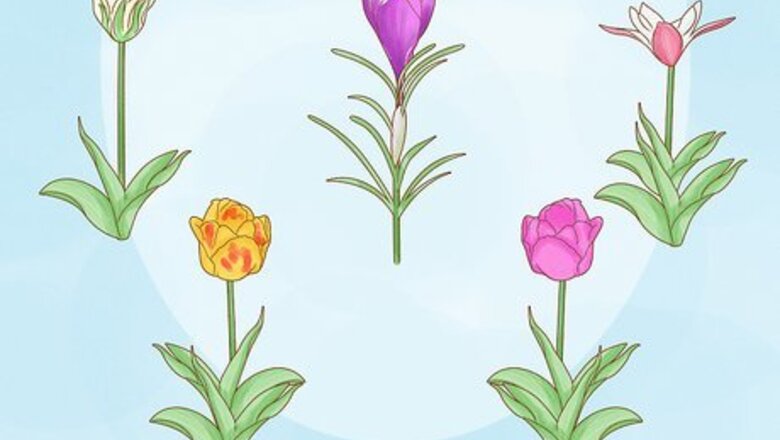
views
| Plant Name | Tulip (Tulipa) |
| Sun Exposure | Full |
| Soil Type | Rich, well-drained |
| Soil pH | Acidic or neutral |
| Bloom Time | Spring |
| Hardiness Zones | USDA: 3–8 |
Planting & Overwintering Tulip Bulbs

Choose perennial tulips if you want them to come back. Both the type of tulip and the way you care for it determine whether you’ll have an annual or perennial plant. Annuals only last 1 year and need to be replanted each fall. Perennials will come back year after year and spread through your yard or garden. Here are the varieties that are the most likely to come back with the least amount of effort from you: "Olympic Flame" Tulip "Peppermint Stick" Tulip "Negrita" Triumph Tulip "Spring Green" Viridiflora Tulip
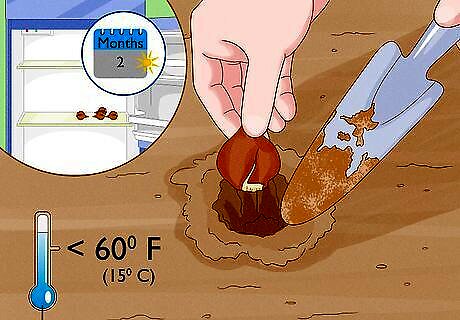
Plant your tulips in the fall, about 6 to 8 weeks before winter. Tulip bulbs are best planted in September or October in the northern climates and October or November in the southern climates. The warmer your climate, the later you plant them. Get the bulbs in the ground or pots when the soil temperature is below 60°F (15°C). The tulips will develop strong roots over the winter, allowing them to bloom beautifully in spring. Choose large, strong bulbs that are free from mold. You can keep tulip bulbs in your refrigerator (or some other cool, dry location) for about 2 months before planting season if you buy them in summer. However, do not store them next to apples, as they give off ethylene, destroying the bulb. Most bulbs need 12-14 weeks of a "cold period" to bring about beautiful bulbs come spring. Do not buy bulbs after December 1st unless they've been "pre-cooled."
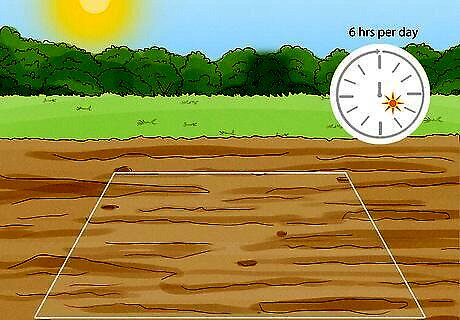
Choose an area that receives partial to full sun. Pick a spot that receives at least 6 hours of direct sunlight per day to ensure your tulips will thrive. This is especially important for perennials. Select a spot away from large trees so the flowers don’t have to compete with the roots for nutrients.
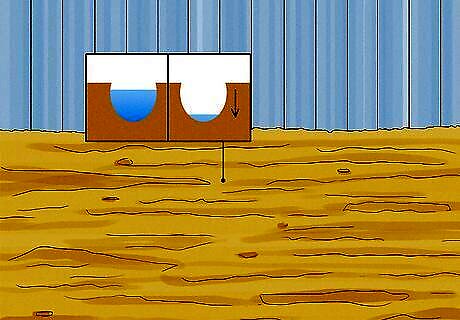
Pick a spot with sandy, well-drained soil. Amend your soil as needed to ensure it’s well-drained, neutral to slightly acidic, and fertile. Wet soil will ruin tulips. Improve drainage by adding shredded pine bark or even sand to the area.
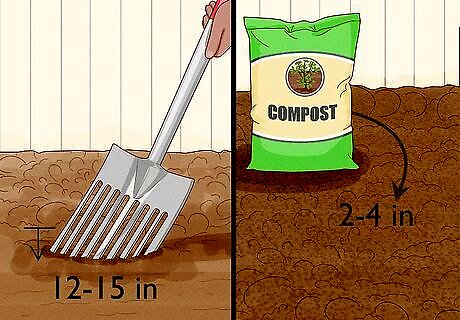
Loosen the soil. Before planting the tulip bulbs, use a planting fork or tiller to loosen the soil. Dig down in the soil 12 to 15 inches (30.5 to 38.1 cm). Then, mix 2 to 4 inches (5.1 to 10.2 cm) of organic matter, like compost or peat moss, into the soil.

Dig holes 3 times as deep as the bulb. The bigger the bulb, the deeper your hole needs to be. Dig 4 to 6 inches (10.2 to 15.2 cm) down into the soil to make room for your bulbs. The bigger the bulb, the bigger the bloom will be, too.
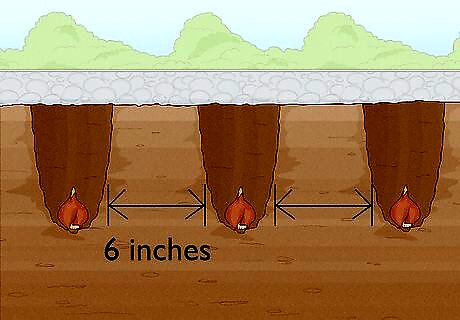
Plant tulip bulbs 4 to 6 inches (10.2 to 15.2 cm) apart. Give each bulb plenty of space to grow sufficiently, otherwise, they’ll encroach on each other's nutrients. Plant each bulb pointy end up. Fill the hole with soil and press the dirt into place firmly. Tulips rapidly multiply when left in the ground. Even if you only plant a few, in a couple of years, you'll have a whole family.
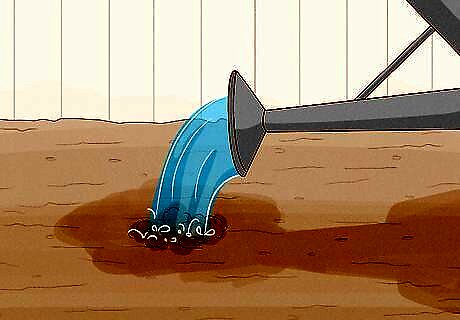
Water your tulips. Right after planting, water them thoroughly to trigger growth. This will likely be one of the few times you actually have to water tulips unless you live in a very dry climate. Do not water them again until you see leaves. Then, give them a light sprinkling.

Apply mulch if you live in a cold climate. After planting your tulip bulbs, cover them with a 2 to 3 in (5.1 to 7.6 cm) layer of shredded bark or straw to protect the bulbs from frost and retain moisture. If you often have rodents or animals in your garden, erect a cage or fence around the bulbs. Or, put thorny leaves or gravel in with the soil to deter pests. Adding mulch is the only thing you need to do to overwinter tulips—they’re hardy enough to survive during the cold months. If you're planting perennials, feed them every year to start them going again. Use organic material, compost, or a balanced time-release bulb food every fall to start the process.
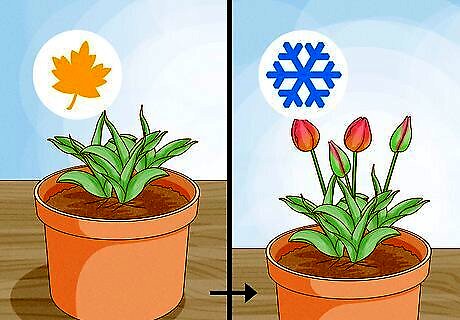
Plant tulips in pots in the fall to get winter blooms. Choose a 6 in (15 cm) pot with multiple drainage holes. Fill it about one-third full of well-draining potting soil, and place about 6 tulips bulbs pointy-end-up in the pot. Cover them loosely with soil so they’re about 4 inches (10 cm) deep and then water thoroughly. Place your potted tulips somewhere with a temperature between 35 to 48 °F (2 to 9 °C) for about 12 weeks, like a basement, cellar, or even your refrigerator. Bring your pots out of the cold after 3 months and place them in cool, but sunny, windows. They’ll bloom after 3-4 weeks. This process is known as forcing blooms, and potted tulips will only flower once. Once the foliage is wilted and yellow, dig up the bulb and discard it.
Tulip Care & Maintenance
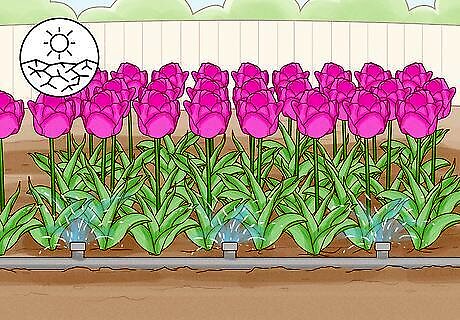
Water developing tulips only during a dry spell. If it hasn't rained in a few weeks in your area, give your tulips a dusting of water. Generally, though, you don’t need to water tulips so long as you receive 0.67 inches (1.7 cm) or more of rainfall per week. Don’t allow your tulips to remain in standing water. If there has been an excess of rain in your area, drain out any extra water from the area if you can. Or, add some shredded bark or sand to the area around your tulips to help keep them dry. If you notice that the area you planted your tulips in collects water, you'll likely be better off moving the plant to a drier area. Dig them up taking the surrounding soil with you and find an area that rain falls on, but can drain out of.

Fertilize your tulips at the beginning of spring. Fertilize your tulips once at the beginning of spring for continuous growth. Sprinkle about 1 teaspoon (4.9 mL) of high-nitrogen fertilizer (30-0-0) into the soil around your tulips. Tulips are pretty easy in the scheme of things. If you're dealing with annuals, they may not need fertilizer at all. In the right climate, you can plant your tulips and essentially forget about them, no watering or fertilization necessary.
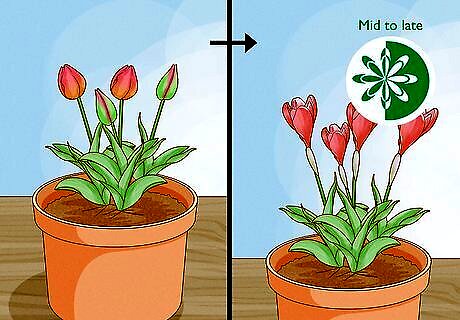
Expect tulips to bloom in mid to late spring. When your tulips will flower depends on the specific variety you have, but generally, tulips are spring-blooming flowers.
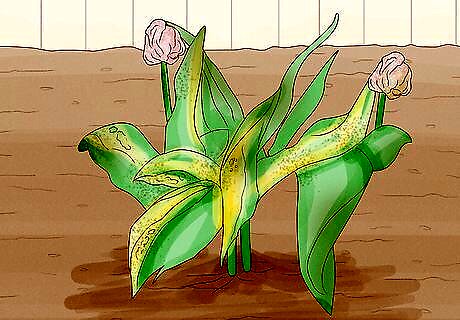
Check for pests and diseases. Blight (or Tulip Fire) creates brown specks on the leaves and turns the flower grey in color. If any of your bulbs are diseased, dig them up and throw them away to prevent the blight from spreading to other tulips. If only part of the plant is damaged, cut it off to see if you can salvage the plant. Provide proper care for your tulips to prevent diseases. Make sure they get a modicum of moisture, a little bit of shade, and are planted in decent, slightly acidic soil. If aphids become a problem, spray them off the plants with water.
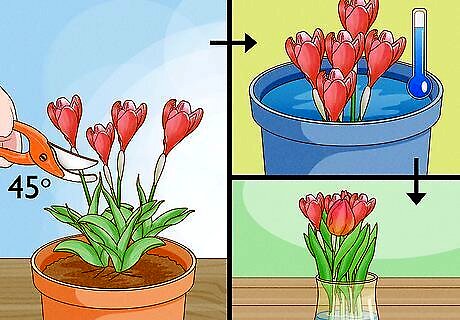
Cut tulips at a diagonal to display in vases. If you want to create a beautiful bouquet or centerpiece, use sharp, clean shears to cut the stems from the plant at a diagonal angle. Then, wrap the top two-thirds of the flower stems in newspaper to keep them straight and put them in a bucket of cool water. After 12-18 hours, re-cut the stems and display them in a vase. To care for fresh-cut tulips, trim the stems, replace the water, and add a little flower food each day to prolong the life of your tulips.
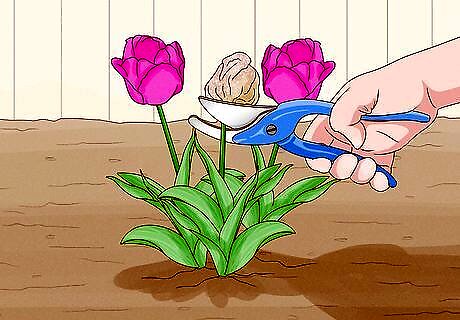
Deadhead and prune your tulips if you’re growing perennials. Remove the spent blooms to prevent the tulips from going to seed if you want them to come back the following year. Use shears to cut off the flower head once it’s spent. Wait about 6 weeks, until the foliage yellows, to cut the plant back to ground level. It needs this time to build up energy in order to flower the following season. If you want your tulips to spread, allow them to "naturalize" or go to seed so that more will come back the following year.
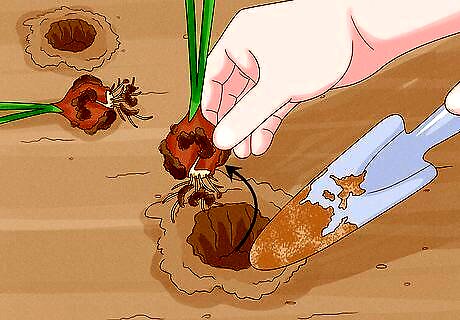
Dig up the bulbs after blooming if you’re growing annuals. Some gardeners prefer to treat tulips as annuals and replant them each fall. Generally, annuals have more vibrant blooms. Once all the tulips have bloomed and died, dispose of the entire plant from bulb to tip. Many farmers and gardening enthusiasts prefer annuals when it comes to tulips. They're easy to grow, cheap, and can easily be replanted. They can grow more for the next year and experiment with different varieties if they so choose.

Plant fresh tulips if yours stop flowering. Even though many tulip varieties are perennials, they won’t keep blooming forever. If yours are only producing leaves instead of blooms, it’s time to dig them up and discard them. In the fall, plant fresh tulip bulbs in well-draining soil and provide them with plenty of sunlight.














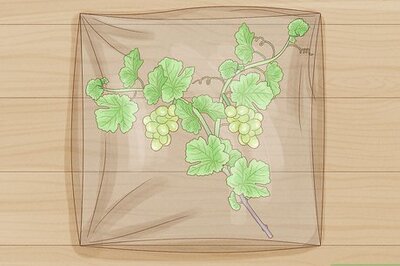





Comments
0 comment